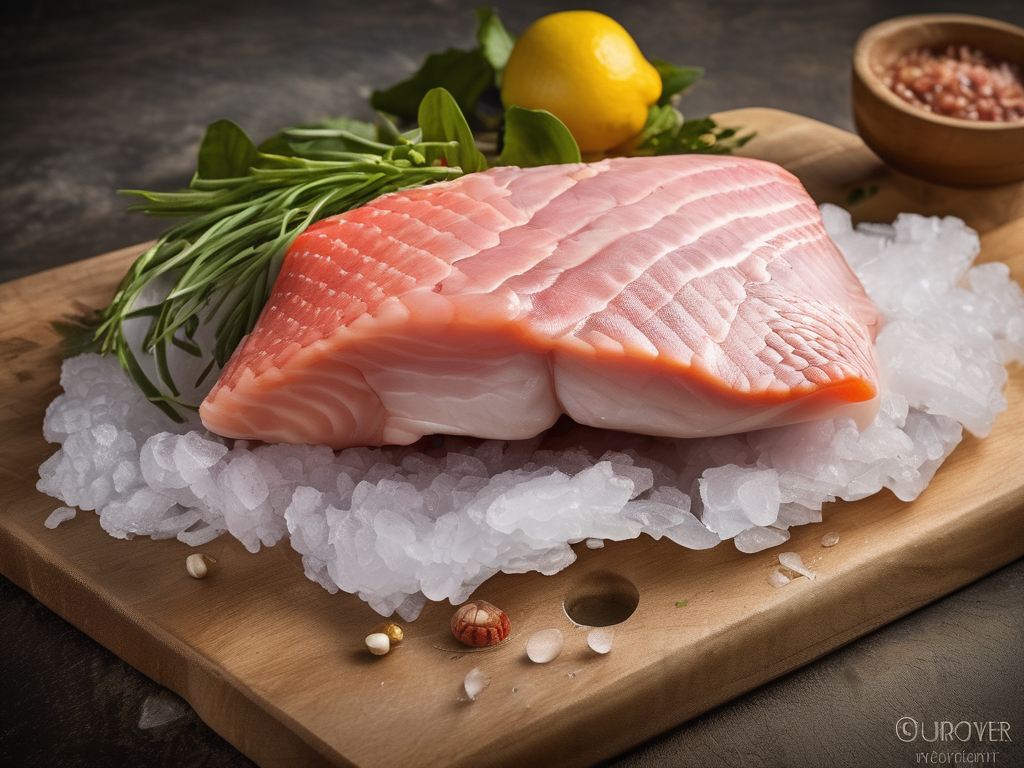
Is Your Grouper Purchased Commercially Frozen Raw Still Safe to Eat?
Is Your Grouper Purchased Commercially Frozen Raw Still Safe to Eat?
If you've purchased grouper that is commercially frozen raw and stored it in your freezer for some time, you may be wondering if it's still safe to consume. Proper handling and storage of frozen seafood are crucial to maintaining its quality and safety. In this blog post, we will explore how to determine if your grouper is still safe to eat and provide you with essential tips for handling and storing frozen seafood. (Grouper purchased commercially frozen raw)
Food Storage Essentials
Products that help you store and preserve your food better
Disclosure: As an Amazon Associate, we earn from qualifying purchases. This helps support our site and allows us to continue providing free food safety information.
Understanding Grouper Purchased Commercially Frozen Raw
[Grouper](/food/grouper purchased commercially frozen raw) is a popular fish known for its mild flavor and firm texture. When purchasing commercially frozen raw grouper, it is essential to ensure that it has been handled and stored correctly to maintain its quality and safety. Frozen grouper can be a convenient option as it allows you to enjoy fresh-tasting seafood at your convenience.
How Long Can You Keep Frozen Grouper?
When properly stored, frozen grouper can maintain its quality for an extended period. However, it is essential to check the storage time to ensure that the fish is still safe to eat. Here are some general guidelines on how long you can keep frozen grouper:
Storage Time for Frozen Grouper
-
Whole Grouper:
- Can be stored in the freezer for up to 6 months.
-
Grouper Fillets:
- Can be stored in the freezer for up to 3-4 months.
-
Cooked Grouper:
- Can be stored in the freezer for up to 2-3 months.
How to Tell If Your Grouper is Still Safe to Eat
Recommended Food Storage Products
Keep your food fresh and organized with these storage solutions
Disclosure: As an Amazon Associate, we earn from qualifying purchases. This helps support our site and allows us to continue providing free food safety information.
To determine if your commercially frozen raw grouper is still safe to eat, consider the following factors:
Expiration Date
- Check the expiration date on the packaging. If the grouper has passed the expiration date, it is best to discard it.
Color and Texture
-
Color:
- Grouper should have a consistent color throughout. Avoid consuming grouper with discolored patches or an off odor.
-
Texture:
- The flesh should be firm and spring back when touched. If the texture is mushy or slimy, it is a sign that the grouper has spoiled.
Smell
- Odor:
- Fresh grouper should have a mild, briny smell. If the grouper smells sour, fishy, or ammonia-like, it may be spoiled.
Freezer Burn
- Freezer Burn:
- Look for signs of freezer burn, such as ice crystals or dry, discolored patches on the surface of the grouper. Freezer-burned fish may have a stale taste and texture.
Tips for Handling and Storing Frozen Grouper
Proper handling and storage are key to maintaining the quality and safety of frozen grouper. Follow these tips to ensure your grouper stays fresh:
Handling Tips
- Thaw grouper in the refrigerator or under cold running water to prevent bacterial growth.
- Avoid refreezing thawed grouper to maintain its quality.
- Use separate cutting boards and utensils for raw and cooked grouper to prevent cross-contamination.
Storage Tips
- Store grouper in airtight containers or freezer bags to prevent freezer burn.
- Label the grouper with the date of purchase to track its storage time.
- Keep the freezer temperature at 0°F (-18°C) or below to ensure the safety of the grouper.
Conclusion
In conclusion, properly handling and storing frozen grouper is essential to ensure its quality and safety. By following the tips outlined in this blog post and paying attention to the signs of spoilage, you can enjoy delicious and safe grouper dishes. Remember to always practice food safety measures when handling seafood to prevent foodborne illnesses. (Grouper purchased commercially frozen raw)
Related Posts
Here are some other articles you might find helpful:
Food Storage Essentials We Love
Products that help you store and preserve your food better
Disclosure: As an Amazon Associate, we earn from qualifying purchases. This helps support our site and allows us to continue providing free food safety information.
Scan your food directly and get instant safety info using our AI-powered camera feature.




